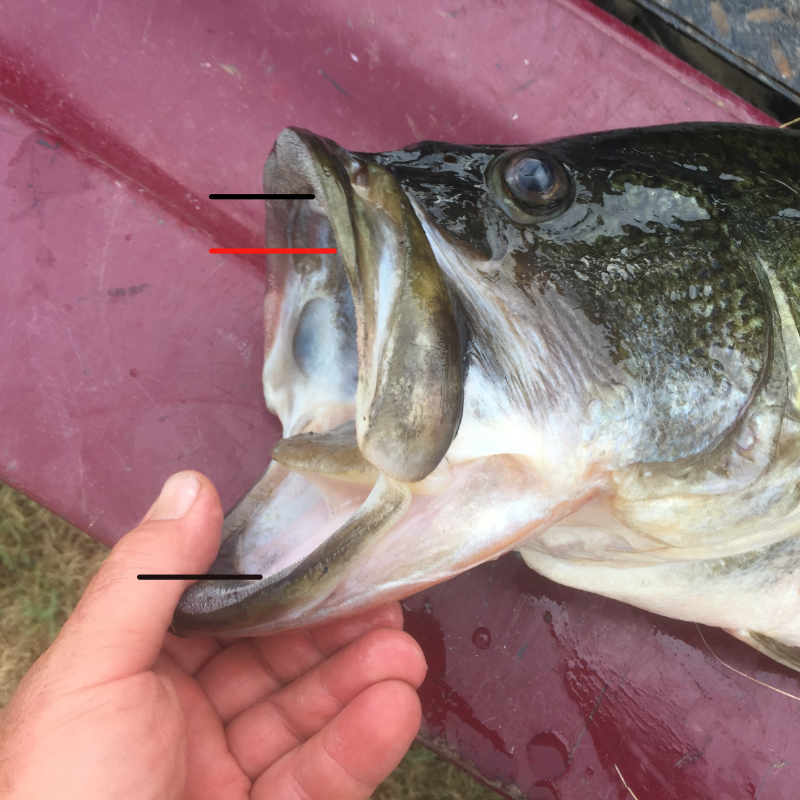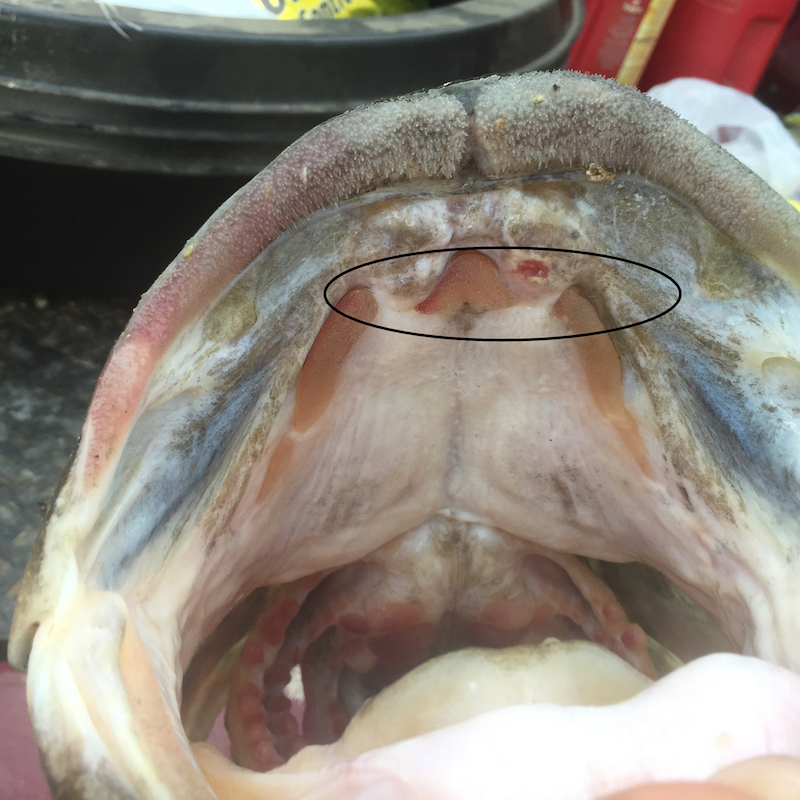...So if when eating it takes one too long to get food swallowed, food can easily get stolen. It behooves predators to eat as quickly as possible which to me means eat the smallest yet largest items that can be swallowed quickly.
As a rule, the largest LMB(9#'+) in the pack I fed are the most aggresive, and the first to grab a handout. I've had them attack a 4-5" CNBG/GSF and swim away, and I've also seen the same LMB come back 2 more times and feed again. That's far rarer. 20+" LMB rarely hit a 8" CNBG here.
The biggest CNBG I've removed from a LMB here was 10.5". Probably an old CNBG that was slow moving. The LMB didn't survive the meal.
I've posted all this before, but over the last 4-5 years, I've really cut back on feedings in the upper part of our pond where most of the CNBG spawning beds are. These fish are fed once or twice a day for one second only, and dependent on the season. These fish primarily get a maintenance diet of 1/8" pellets and nothing more. I want them in that smaller LMB gape friendly range for as long as possible. More pellets per pound means more fish eat, and are more apt to spread the calories evenly. The feeder at our dam is targeting trophy sized CNBG (10"+) and only 9.5mm pellets are thrown, and are thrown multiple times a day. Short throws seem to keep smaller CNBG away from the open water frenzy. Both methods seem to work as intended.
So here's a question. What's the gape of this LMB? Is it 5.5" from extended lip to lip, or is it 4.75" from the protrusions on the roof palette to the lower lip? This LMB was 9#'s, and if measuring from the narrowest part of the mouth opening (4.75"), she would max out at about an 8-8.5" CNBG, which has an average height of 4" here. 10" CNBG average 6-6.25" height. Gape determines everything.

